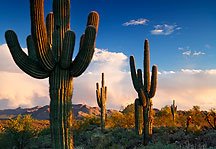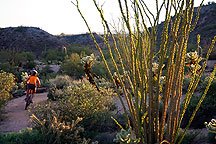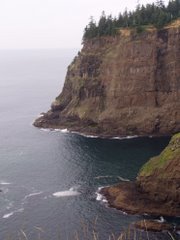Monday, July 26, 2010
Get Kevin's Law moving through Congress
Kevin's Law was nicknamed in memory of two-year-old Kevin Kowalcyk of Colorado, who died in 2001 after eating a hamburger contaminated with E. coli O157:H7. It was formally known as the Meat and Poultry Pathogen Reduction and Enforcement Act of 2003.
The bill was originally introduced by Rep. Anna G. Eshoo, D-Palo Alto, as H.R. 3160, in the 109th Congress.[3] [4] This bill never became law, as it was referred to committee but never reported on by committee nor voted on. Versions of the bill have been introduced in each subsequent Congress, but as of April 2010 have never been reported out of committee.
Kevin's Law would strengthen the U.S. government's ability to prevent contaminated meat and poultry from entering the food supply by:
- Requiring the United States Department of Agriculture (USDA) to identify the pathogens that threaten human health (e.g. Salmonella, E. coli O157:H7, Listeria monocytogenes).
- Requiring the USDA to establish performance standards to reduce the presence of these pathogens in meat and poultry.
- Confirming that the USDA has the authority to enforce its own standards by shutting down plants that continually breach basic health standards. Courts have held that the USDA does not have this authority in the absence of explicit authorizing legislation.
Corporate meat processors have lobbied against Kevin's Law, arguing that it would increase the cost of food and is unnecessary.
That last part is complete b.s. of course, when we're talking about human lives and what most of the general public consumes on a daily basis. The issue of e-coli in our food is an alarming one, cases seem to be increasing with consistency in the news, and much of the corporate food industry tries to mask it with stuff like ammonia filler in hamburger meat to kill the bacteria.
...and you wonder why friends you might know (yours truly included) are starting to go fully organic and vegan. There doesn't seem to be much left in the world in the way of food to eat that isn't polluted with a potpourri of horrible crap.
It comes as no surprise that companies like Monsanto (the uber evil Death Star of the food industry, you'd be amazed at some of the twisted stuff they do...bad, bad, bad...more on them another time) don't want this bill to pass.
This issue of Kevin's Law doesn't seem to be very well known by the general public, and definitely represents an uphill battle to become law. With many of these issues intentionally hidden from the public, and with the corporate food industry being as big as it is lobbying Capitol Hill, it seems like a seismic shift with public opinion and food-eating habits would be the only way to start bringing attention to the issue.
Here's a link to more information about Kevin's Law for those who are interested. More on this issue and the massive tentacles of its effects later. Kevin's Law is merely a symptom of a massively larger problem with the food industry, and the health of Americans, that weighs in on questions about societal issues like birth defects and possibly even the emerging pattern we've seen with things like autism and ADD.
It goes without saying that you can't put a price on your health.
Sunday, June 20, 2010
Tuesday, May 25, 2010
Thanks BP
Sunday, May 9, 2010
Environmental Heresy in the Gulf
I hope BP gets sued by EVERYONE on the Gulf Coast. Sue the oily swine out of existence.
Monday, April 5, 2010
THE POCKET PISSER: Repent Benedict XVI!!! You and your subhuman swine will be held accountable
 Hey, it's the day after Easter! Today's a perfect day to piss in the pocket of a pontiff. Forgive me if my aim is off this time and I hit an ear or nostril...you know how it is...some days are on target, and some days I'm just not so accurate.
Hey, it's the day after Easter! Today's a perfect day to piss in the pocket of a pontiff. Forgive me if my aim is off this time and I hit an ear or nostril...you know how it is...some days are on target, and some days I'm just not so accurate. Interestingly enough, my days of bad aim tend to involve folks who are in need of a little extra of the yellow juice...so let's get on with our pocket pisser of the day.
It's hard to know where do I start with this one. First off, the ongoing arrogance and audacity of the catholic church never ceases to amaze me...not that such a realization should be of surprise to anyone who sees outside the veil and vortex of catholicism and has an iota of capacity to think for themselves.
Apparently feelings among church officials have been hurt with respect to the timing of YET MORE accounts of sexual abuse of altar boys.
Gosh my dearest pope, cardinals, and priests - I'm so sorry your holy week and Easter parade was rained upon with this news.
The reaction of the catholic church, and its lack of sensitivity to these latest accounts -- part of an ongoing nightmare for many coming out with their stories for the first time -- literally nauseates me.
Nevertheless, I got one little question here.
Why isn't more being done to expose these predators who were part of the church? Why aren't arrests being made? Seriously, WHY? For those who did the acts, were accomplices, aided, or abetted, explain to me what makes them immune to arrest?
Here's an excellent article by Roland Martin of CNN on the matter.
If this involved Protestants, Muslims, Jews, Buddhists, or another religion, there would be arrests, right? So what makes the the catholic church so special, besides its glorious history of hypocrisy, ruling by fear, and persecuting other religions? Oh, and I guess you can add hundreds, if not thousands of accounts of altar boy molestation and sodomy to that list...and those are only the incidents we know about. Sadly, common wisdom would point to acts happening for hundreds of years.
Consider me the latest heretic. I'm sick and tired of seeing these soulless cowards and subhuman swine who pose as false heroes and men of God (give me a break) get away with these acts.
EXPOSE & ARREST!!!
We're beyond damage control and trying to repair credibility. I hope the whole goddam f'n church implodes in on itself and goes up in flames. Rest assured that I'll be doing a victory dance and cooking smores at the weenie roast...with a bottle of the blood of Christ in the other hand...then I'll piss in the pontiff's pocket...that is, if I can find one through the assortment of robes and gold chains.
Friday, February 5, 2010
Copenhagen Summit results: what REALLY happened
For those of you who don't know who Thom Yorke is, he's the lead singer /songwriter of the Britain-based rock band Radiohead (the fella on the right in the photo), and an ardent environmental activist.
 I believe, technically speaking, he actually "snuck" into the conference with a press pass he got from a friend (maybe the guy posing in the photo with him?) I don't know.
I believe, technically speaking, he actually "snuck" into the conference with a press pass he got from a friend (maybe the guy posing in the photo with him?) I don't know. Rest assured, he had no good news to report...it sounds like it was an apathetic waste of time and that very little -- if anything -- got accomplished.
Still, kudos to Thom for getting his butt into the thing so he could relay a real and unfiltered report on what REALLY happened to the rest of us! I'm sure he'll have a place in the Environmental Hall of Fame, but until I put that list together we'll just refer to him as a hero.
Thursday, January 28, 2010
Obama Administration needs to put HSR on the fast track (pun intended)
 Today, at a stop in Tampa with the Veep (and experienced rail rider) Joe Biden, President Barack Obama spoke to the opening of construction of a high speed rail (HSR) line between Tampa and Orlando, Florida.
Today, at a stop in Tampa with the Veep (and experienced rail rider) Joe Biden, President Barack Obama spoke to the opening of construction of a high speed rail (HSR) line between Tampa and Orlando, Florida.Friday, October 9, 2009
Sweva the Poet: My Forrest Gump moment
It doesn't involve mass transit, the environment, or anything in that regard...it involves my being suddenly thrust into the spotlight at Seattle's Richard Hugo House answering questions about a subject I'm least familiar with: poetry.
The questions weren't easy ones either...enough to stump even the most ardent reader and English major...but the pressure didn't end there.
The thing is that it doesn't just involve a spotlight, but a spotlight in front of 60 live in-the-flesh poetry experts and poetry writers...AND a live camera rolling...AND a recording podcast.
I can't think of a more bizarre situation to find myself in...and the kicker? I didn't even know the damn thing was happening in the first place -- I simply stumbled into it.
I'm still figuring out how to spin the story, and it needs some conceptual development. Check back if you can at the end of the weekend, like the evening of October 11. I should have something up then.
Saturday, July 18, 2009
Seattle's light rail debut glows while the irony of tragedy occurs in S.F.
 What a day...light rail opened today in Seattle to applause, rave reviews, and much fanfare.
What a day...light rail opened today in Seattle to applause, rave reviews, and much fanfare. Unfortunately San Francisco experienced the opposite, as two light rail trains collided in that city's system, injuring as many as 50 passengers.
...but I know what you're thinking...good news first, please...
Here's a link to some of the great happenings today in Seattle from Flickr. There's some video of a train arriving, lots of smiling faces, and LOTS of green Sounders FC jerseys...what looks like a happy, festive bunch!
Much of Seattle's history, and the perseverance of its citizens for a mass transit future, can be summed up in this article from the Seattle Post-Intelligencer.
On a sour note and in a bizarre case of irony, San Francisco's light rail system experienced a collision -- also today -- which injured as many as 50 passengers.
Wednesday, July 15, 2009
Light rail FINALLY begins its run in Seattle
 After 120 years of failed efforts for a real regional mass transit system, with the last 40 years considering a bona-fide light rail system fraught with political bickering, recessions, budget mismanagement, and seemingly any other sort of unforeseeable delay, it's finally arrived to Seattle.
After 120 years of failed efforts for a real regional mass transit system, with the last 40 years considering a bona-fide light rail system fraught with political bickering, recessions, budget mismanagement, and seemingly any other sort of unforeseeable delay, it's finally arrived to Seattle.Light rail makes its debut to the Seattle public this Saturday, July 18.
The system stretches from Westlake Center in downtown Seattle south to Tukwila (see below)...and in December a 1.7 mile segment will open up so passengers will be able to reach Sea-Tac Airport. What opens this year is the initial segment of a larger system that's funded for linking Lynnwood, Federal Way and Bellevue by 2023, with the long-range plan of linking Everett, Tacoma, Redmond, and possibly more areas beyond that.
 Moreover, this eventual regional system will work with a current South Lake Union Streetcar...or Trolley (also lovingly referred to as the SLUT...as in "I'm gonna ride that SLUT twice a day, everyday..."), part of a developing Seattle streetcar network (also rail-based) to serve individual local neighborhoods.
Moreover, this eventual regional system will work with a current South Lake Union Streetcar...or Trolley (also lovingly referred to as the SLUT...as in "I'm gonna ride that SLUT twice a day, everyday..."), part of a developing Seattle streetcar network (also rail-based) to serve individual local neighborhoods.The arrival of what is expected to be the new crown jewel of the Seattle transit system looks shiny and new, and will serve as a reliable spinal cord of transport as it winds its way through tunnels, streets, and elevated platforms throughout the city. Tens of thousands of riders are expected to use it every day.
What is hidden to those riders, and probably largely ignored (and I don't blame them), are the 40 years of political battles, indecision between light rail vs. monorail, and mismanaged transit projects in what turned out to be what seemed like an impossibly long wait for a light rail system that screamed common sense.
...but, of course, since that made sense; that would have been too easy...so here the story goes, from the back deck of the house I grew up in on the outskirts of the big city.
When I grew up in the Seattle in the 1970s and 80s, the idea of even considering a light rail system was merely a joke. The objections to the notion were many... it's unnecessarily expensive... we lack a dense urban core... the town was too small... what, are we Manhattan now? The focus was people in their cars and renovation of the I-90 bridge, one of the largest and most protracted national freeway projects in history...a project that spanned three decades.
Of course, as Seattlites turned a blind eye to the idea of light rail, their LESS POPULATED neighbor Portland 150 miles to the south already had one in the works.
The "floating bridge" has been both Seattle's highlight and curse. Floating bridges, floating bridge renovations, sunken floating bridges from November storms (occurring twice), then MORE floating bridge renovations, damned the Seattle native's psyche in my opinion and took the focus away from more important issues that were stalling.
The I-90 renovation turned out to be the focal point of the region for years, and not even close enough to addressing traffic issues...it only got worse. As the 90s emerged, and Seattle's traffic became some of the worst in the country, the light rail joke soon turned into horror that we didn't have such a system in place to save us...a system that went to the polls in both 1968 and the early 1970s, but failed.
Then, in the 1990s, voters started to smarten up and adopted a larger vision of Seattle's future...it became apparent that if you didn't pay for something (via tax package or bond issue...oh, and don't mismanage it please), Seattle's operating civilization and transportation systems would implode, literally...not to mention that everyone from California started to move into the region in the late 1980s, spinning growth out of control.
Uncontrollable urban growth, and horrific urban planning debacles like downtown Issaquah were finally managed statewide with the advent of the Growth Management Act in 1990. It became understood that light rail voted in phases in the mid to late 90s was a necessary component of a larger picture of infill development, community-based efforts to curb urban sprawl, concurrency with infrastructure, traffic management, and the effort to save the environment.
 You can read more about the protracted history of establishing light rail in Seattle here. Now back to the light rail line, and the fun stuff.
You can read more about the protracted history of establishing light rail in Seattle here. Now back to the light rail line, and the fun stuff.
This new light rail system is possibly the most complicated one in the entire United States. Perhaps the most interesting component of this system is how it interacts with a regional bus system that's already in place and cutting-edge with the use of hybrid busses.
When the light rail hits downtown Seattle's tunnel system, which was originally built 20 years ago, it turns into an interesting shared situation with busses...an article from the Seattle Times describes that whole thing:
 When light-rail service begins July 18, the trains will take turns with buses inside the Downtown Seattle Transit Tunnel.
When light-rail service begins July 18, the trains will take turns with buses inside the Downtown Seattle Transit Tunnel.
Two-car trains began test runs there Wednesday, at the same time King County Metro Transit buses carried regular passengers. That milestone makes it the only joint bus-rail tunnel in the United States, except for one in Pittsburgh that doesn't have stations.
Transit staff face a challenge to keep all that traffic flowing.
Already, an average 1,080 buses and 54,800 riders come and go daily in the 1.3-mile tunnel. Now, add a train every 7 ½ minutes to the 55 or so buses that arrive in a peak hour.
 Signals warn a bus driver not to approach a station platform until the train ahead has departed. Between trains, buses will often enter close together, like a caravan.
Signals warn a bus driver not to approach a station platform until the train ahead has departed. Between trains, buses will often enter close together, like a caravan.
"You can have up to six buses on the platform at the same time," said Keith Sherry, a rail operations chief.
Managers predict some backups — when a train forces buses to pause, or when someone in a wheelchair boards a bus — but say the flow should smooth out within minutes. Still, Metro is adding time to the schedule, so a bus that used to take eight minutes to travel the length of the tunnel is now expected to need nine minutes at peak times.
Buses and trains both will stop at the International District station as well as the three beneath downtown — Pioneer Square, University Street and Westlake Center. Buses also stop at Convention Place.
The tunnel gates, which now are rolled shut at 7 p.m., will stay open late. Some light-rail fans think it will be safer and more pleasant to be in the tunnel than on the street, especially at night. That alone could attract new riders, they hope.
 "People will take light rail to a sports event, they'll take light rail to concerts and plays, they'll take light rail to Seattle Center with their kids. They won't have to wait at some dark bus stop downtown," said Julia Patterson, a transit-board member from SeaTac.
"People will take light rail to a sports event, they'll take light rail to concerts and plays, they'll take light rail to Seattle Center with their kids. They won't have to wait at some dark bus stop downtown," said Julia Patterson, a transit-board member from SeaTac.
Before opening in 1990, the $460 million tunnel was envisioned to serve rail someday. Tracks were even laid but were inadequately insulated and were replaced in an $87 million retrofit from 2005-2007. Contractors also lowered the concrete roadway to make boarding platforms level with newer trains and buses.
In case of a sudden shutdown — as happened last week when an alarm tripped by mistake — trains could still operate from Tukwila to the station near Safeco and Qwest fields using a switch south of the tunnel.
The tunnel remains part of the downtown free-ride zone for buses, but train passengers must pay at least the $1.75 adult base fare, even for short hops.
Mike Lindblom: 206-515-5631 or mlindblom@seattletimes.com



















